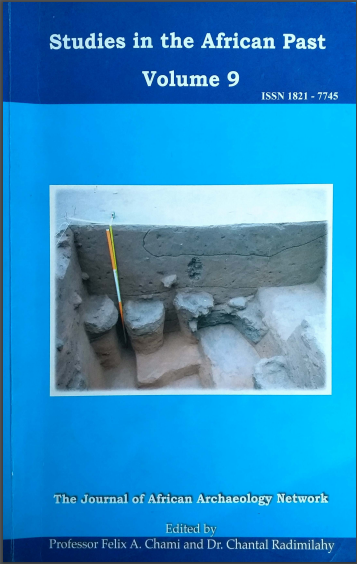Decoding The Swahili: An Integrated Archaeological and Genetic Study of The Swahili of East Africa
Abstract
Current studies of ancient urbanism readily recognize the role of regional and interregional interaction processes in the development and sustenance of urbanism. Although trade and immigration were inherent in the origins of most cities, archaeologists recognized and perhaps improperly attributed their material traces to non-local, often foreign initiatives. Our long-term research agenda has been concerned with understanding the origin and biological composition of the towns and city-states that developed on the East African coast in the late first millennium CE. Archaeological investigations in Kenya and Tanzania have demonstrated that the artefactual traditions in the early city-states show a clear evolutionary development with the earlier villages. Thus precolonial urbanism in East Africa and elsewhere owes its rise, sustenance and demise to wider regional and interregional interaction spheres. In the case of East Africa, it was their relationships with the African hinterland and their connections to the wider Indian Ocean trading system.
Over the next decade, we propose to conduct long-term research aimed at addressing the still poorly known elements in our knowledge of precolonial urbanism in East Africa. Our research will incorporate archaeological, ethnohistoric, and archaeogenetics research on the Kenyan coast. Our archaeological excavations will be based on the major Swahili urban towns including Mtwapa, Gede, Manda, Ungwana, Pate, Siyu and Manda. These settlements rose to prominence as a result of their role in handling the export €“ import trade between the North Eastern African interior and the Indian Ocean. We will 1) conduct targeted excavations at residential and burial locales 2) interview residents about their origins to identify possible source populations 3) collect genetic data from the human skeletal remains for comparison with African, Middle Eastern and Asian genetic databases and 4) carry out a physical and chemical analysis on archaeological artifacts and ecofacts to reconstruct the subsistence and technological baseline necessary for identifying relationships between the coast, other regions of East Africa, and throughout the Indian Ocean. These new technologies when combined with careful excavations and detailed ethnographic information will enable us to address the following hypotheses: 1) that early Swahili populations, while primarily of African origin, were much more diverse in composition than commonly supposed; 2) that some non-African migration to the coast did occur prior to the 19th century; 3) that Swahili stone towns were ethnically diverse and will be revealed by differences between the people and grave contents among the cemeteries, which are located both within the town and outside its perimeter.
Our research, now underway is designed to address key questions, which have powerful and potentially transformative implications for understanding old world relationships within Africa. This research will increase the public ' s awareness of the shared genealogy, which may have positive implications for national unity, often fractured by ethnicity and tribalism. We believe that this study is the next logical step in Swahili studies. The study ' s potential to significantly advanced multidisciplinary migration studies is immense. The rich historic, anthropological, linguistic evidence coupled with ancient and contemporary genetic data will contribute new knowledge and open up new a venues in interdisciplinary research between archaeologists, anthropologists, historians and geneticists.



